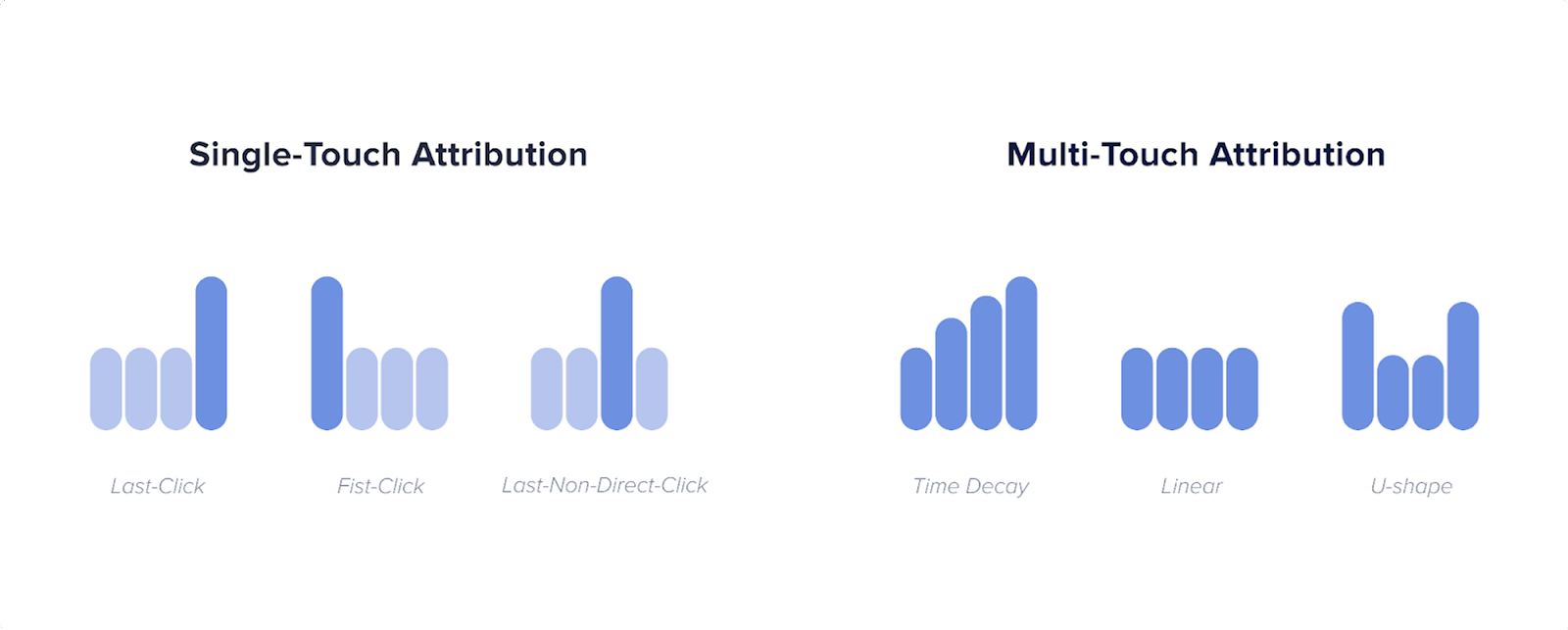Introduction to MMM. Part 1
This is the first article in a series in which I will talk about media mix modeling.
In the first part, I will introduce you to the terms of media mix models, effects and data that you will need to build models.
In the second part, I will tell you more about modeling and optimization: how to choose an approach and metrics, collect and pre-process data, and, in fact, move on to modeling.
The third part will focus on practical tips for building media mix models using Robyn, an experimental marketing mix modeling (MMM) package from Meta Marketing Science.
In the fourth, we'll take a closer look at PYMC-Marketing, a Python-based marketing analytics solution.
So, let's move on to an analysis of the basic concepts and problems that media marketing channel success analysts face.
How to evaluate the effectiveness of marketing channels?
Touch-based attribution
For the last 10-15 years, touch-based attribution has been the standard in this area. This is a marketing measurement approach in which a channel assigns a cookie to a specific user. Then its path can be tracked in your application, store or platform.
There are different approaches to such attribution.
You can choose the last-touch model, that is, data about the last channel that brought a person to your site, or first-touch – data about how the user first came to your site and how he ultimately converted. In these models it is “winner takes all”.
There are also multi-touch approaches, where one user is probabilistically (or otherwise) assigned to multiple channels at once.

However, not everything is very smooth with touch-based attribution:
She prioritizes the bottom of the funnel—the decision and retention stage.
It is impossible to evaluate the effect of offline marketing.
It doesn't fit well with data privacy trends.
Let's look at each problem in a little more detail.
In fact, the bottom of the funnel is favored less by last-touch attribution. That is, if users end up searching for your product in a search engine by name or keyword, then it will seem that your marketing channels are not working at all.
However, it is quite possible that users come after seeing your outdoor advertising or advertising on TV. Touch-based attribution knows nothing about this, and you can't estimate how many sales offline advertising actually brings you.
Privacy is a bit different here. The problem here is that in today's world, it is becoming increasingly difficult to track the effectiveness of performance marketing every year. The European Union adopted the GDPR data protection regulation, and similar initiatives are being taken in the United States. Measures to limit data tracking are being introduced not only at the state level, but also among companies. For example, Apple has introduced restrictions on third-party tracking.
All this suggests that if the era of touch-based attribution is not coming to an end, it is at least undergoing major changes.
Media mix modeling
This is where MMM comes to our aid.
Media mix modeling (MMM) is a statistical analysis technique used in marketing to determine the optimal allocation of resources across various advertising or media channels to maximize the effectiveness of a marketing campaign.
The goal of media mix modeling is to understand the impact of different marketing channels on the overall performance of a campaign and optimally allocate budget based on the contribution of each channel.
In other words, MMM uses regression analysis to try to build a relationship between marketing channel costs and your target metric using historical data. Once such a relationship can be constructed with sufficient accuracy, it can be used to optimize the budget.
Adstock and saturation
Adstock
The effects of marketing are not always immediate. A user can install an app or register with an online store, but it may take quite a while before the conversion occurs and they make a purchase.
This may vary greatly depending on your product. For example, users usually approach large purchases with greater responsibility. To buy a refrigerator, the buyer needs to carefully weigh everything, compare several models on the website, and only then proceed directly to the purchase. Obviously, the user makes the decision to order pizza much faster.
This effect in marketing is called adstock, or transfer effect. In its simplest case, it is modeled by the percentage of people who will leave thinking the next day. Usually this percentage is fixed. For example, if 100 people came to your site today, and your adstock rating is 0.4, then on the first day 60 people will make a purchase from you, on the second – 60% of the 40 remaining people (not counting new ones who came), that is, 24 person, on the third day – 60% of 24, which is approximately 10 people, and so on.
There are other ways to model adstock, but this one is the simplest and most understandable. It is worth noting here that the peak of purchases will not necessarily occur on the first day. It is also not necessary for the adstock rating to be fixed: on the first day the decrease can be 10%, and on the second – by 50%.
Also, modeling usually requires specifying the adstock period – this is the period during which the effect continues. For example, it would be strange to expect a user to make their first purchase a year after registration.
Saturation, or diminishing returns
Saturation, or diminishing returns, is the effect that each next dollar invested brings you less benefit than the previous one. This behavior is due to the fact that each additional volume of advertising above a certain threshold level has less and less impact on demand growth.
In fact, this is not always the case and can work in both directions: the next ruble spent, on the contrary, can bring you greater benefits. This happens, for example, if your maximum bid for one user at some advertising auction is 30, and your competitor’s is 31, which means that the next ruble can bring your competitor’s users to you.

However, channels have their own depth, and the product has its own target audience. The moment when you reach the peak of your audience is called saturation. To make the most of our marketing budget, we want to know the diminishing returns curve so we can find the right point on it where we're not spending too little and at the same time not paying too much per user.
There are many ways to model diminishing returns, and you will have to tinker with it to find the best option. By the way, this same effect can simulate the fact that you start receiving leads – that is, users who left their contacts – only starting with a certain amount of investment. This is the price for the first user.
Data needed for modeling
In this section, I think it is important to divide the answer into three parts.
What is the minimum required to start building an MMM?
What is the optimal set to start with?
What is the maximum set that is used to obtain important insights?
Minimum Required
The minimum required includes a time series of your marketing spend as well as your marketing metric. Don't forget that your data should be at the same granularity level. I will tell you more about how to choose granularity in the second article of the series.
Optimal set
If we add external factors influencing the market to the minimum set, then this can be called the optimal set for modeling.
External factors may include, for example:
Factors influencing seasonality
Factors affecting sales in general (covid-19, changes in interest rates, exchange rates)
Data from competitors (Price for similar products, promotions)
Maximum set
The maximum set will be required in order to give MMM the most accurate picture of channel performance. It will include:
Channel conversion data
Conversion data in companies (one level below channels)
A/B test data
Lift test data
So, we have identified the data needed for media mix modeling. We will talk about further preparation and actual modeling in detail in the next article.




